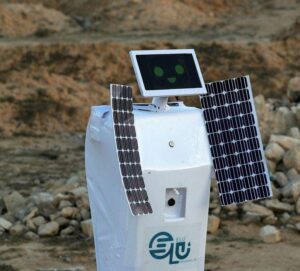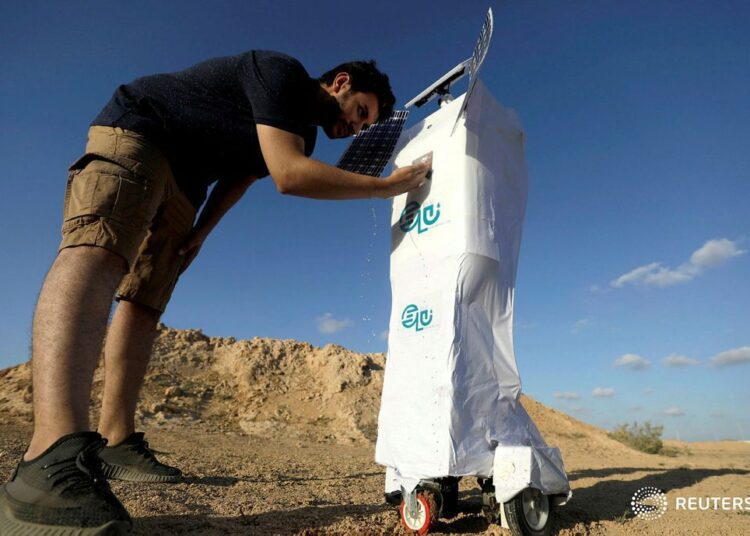Life on Mars? British singer David Bowie asked that question in 1971. Otherwise, there is no proof that life existed there. What about water on the Red Planet? Almost all water on Mars today exists as ice, although some also occurs in tiny quantities as vapour in the atmosphere.
The idea of generating water on Mars sparkled like the mineral variety in the mind of an Egyptian mechatronics engineer, who was inspired by NASA missions to Mars. Now, Mahmoud el-Komy with his ELU robot is to bring water to Mars by turning air into drinkable water, making headlines worldwide.
Let’s put the skepticism to one side and suspend disbelief for a moment.

El-Komy, winner of the Geneva Invention Award, has since 2013 being trying to develop technology that can absorb moisture in the air and turn it into water.
“Since 2018, I have been inspired by NASA missions to Mars and their plans to start space tourism,” el-Komy said in an interview with The Egyptian Mail.
One sees tourists at the Pyramids hugging bottles of water, so why should visitors trudging in the Martian dust be any different?
“I made a robot that can serve space tourists. ELU is the first robot in the world that generates water from air.
“It took me nine months and cost nearly $250 but the technology is more costly than this: $5,000,” he added.
“The robot is designed to operate in climatic conditions similar to those on Mars where the atmosphere weather is known to be saturated with high levels of humidity, but it is very dry.
“Climatic conditions on Mars are harsher than on earth. Temperatures on Mars average 210 K (–63 C). So, I created a simulator here on Earth with such conditions to test the effectiveness of this technology,” he said.

El-Komy explained that the robot can explore areas with the highest humidity so that the robot itself can generate small amounts of water and be used to explore areas with humidity to set up water plants,” he said.
Could we drink ELU-generated water? El-Komy said he had updated the techniques and filtration system to make drinking water.
“I am so grateful to Minister of Environment Yasmine Fouad who supported me and provided me with a laboratory to test the water quality,” he said.
El-Komy took him six months to test the quality of the water until it became drinkable.
“If this robot can work on Mars, it can on Earth,” he said.
The engineer told this newspaper that this robot can be used in areas like desert regions that do not have natural water sources.
“Any area with high humidity can benefit from this robot and have access to water.”
El-Komy made headlines worldwide after designing a remote-controlled robot, Cira-03, that can test for Covid-19, do blood tests and echocardiograms and take X-rays, and display the results to patients on a screen on its ‘chest’.
El-Komy has had a varied career.
“I studied mechanical engineering at Tanta University. I specialised in mechatronics. I also worked with the Military Technical College for several years. At the Arab Organisation for Industrialisation I worked on a machine that can manufacture components for weapons.
“Now, I am working on Cira-04. I am so happy that I raised the name of Egypt so high. I promise that I will do my best to make more achievements,” el-Komy said.
By the way, ‘ELU’ is no fancy acronym; it’s Estonian for ‘life’.






Discussion about this post